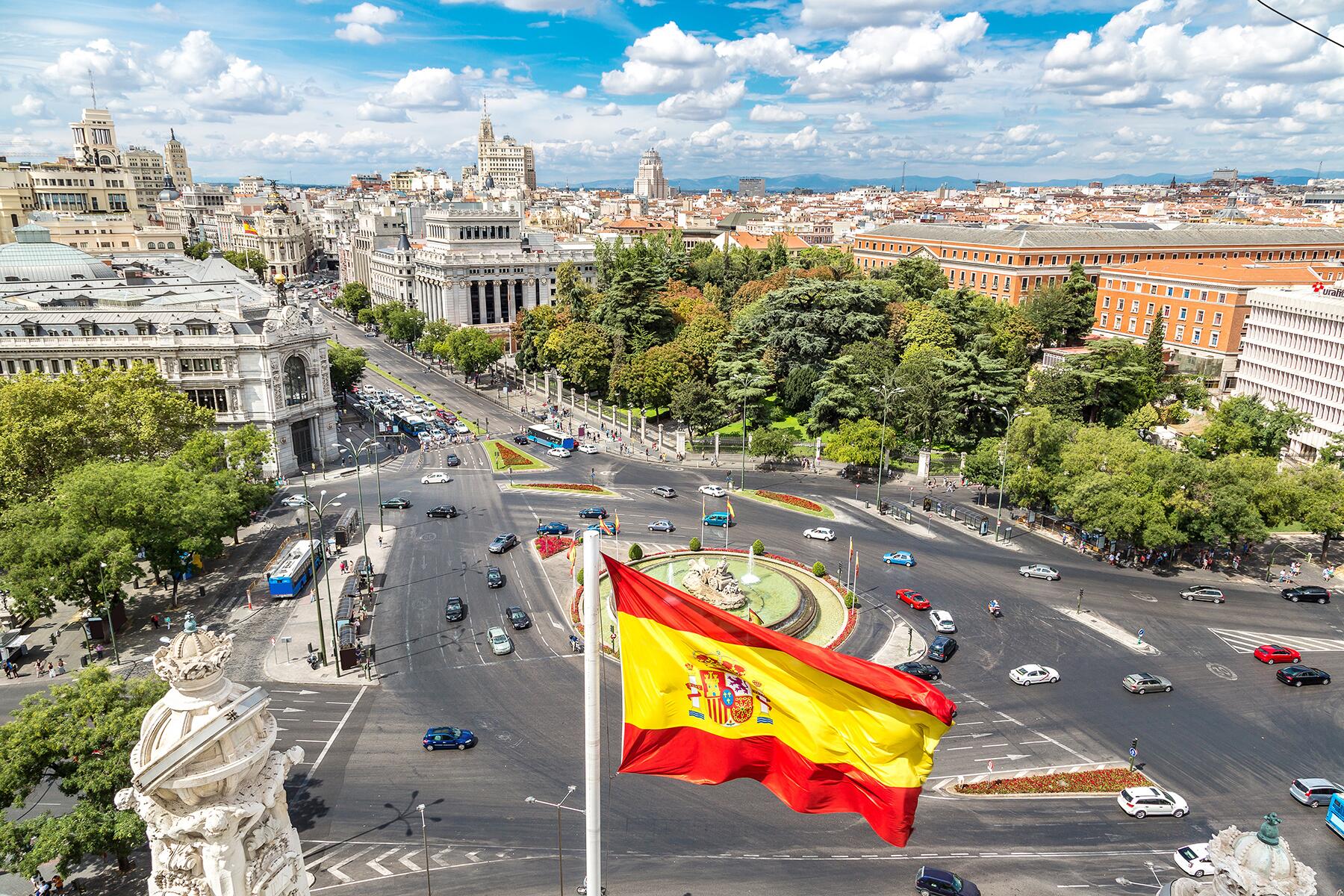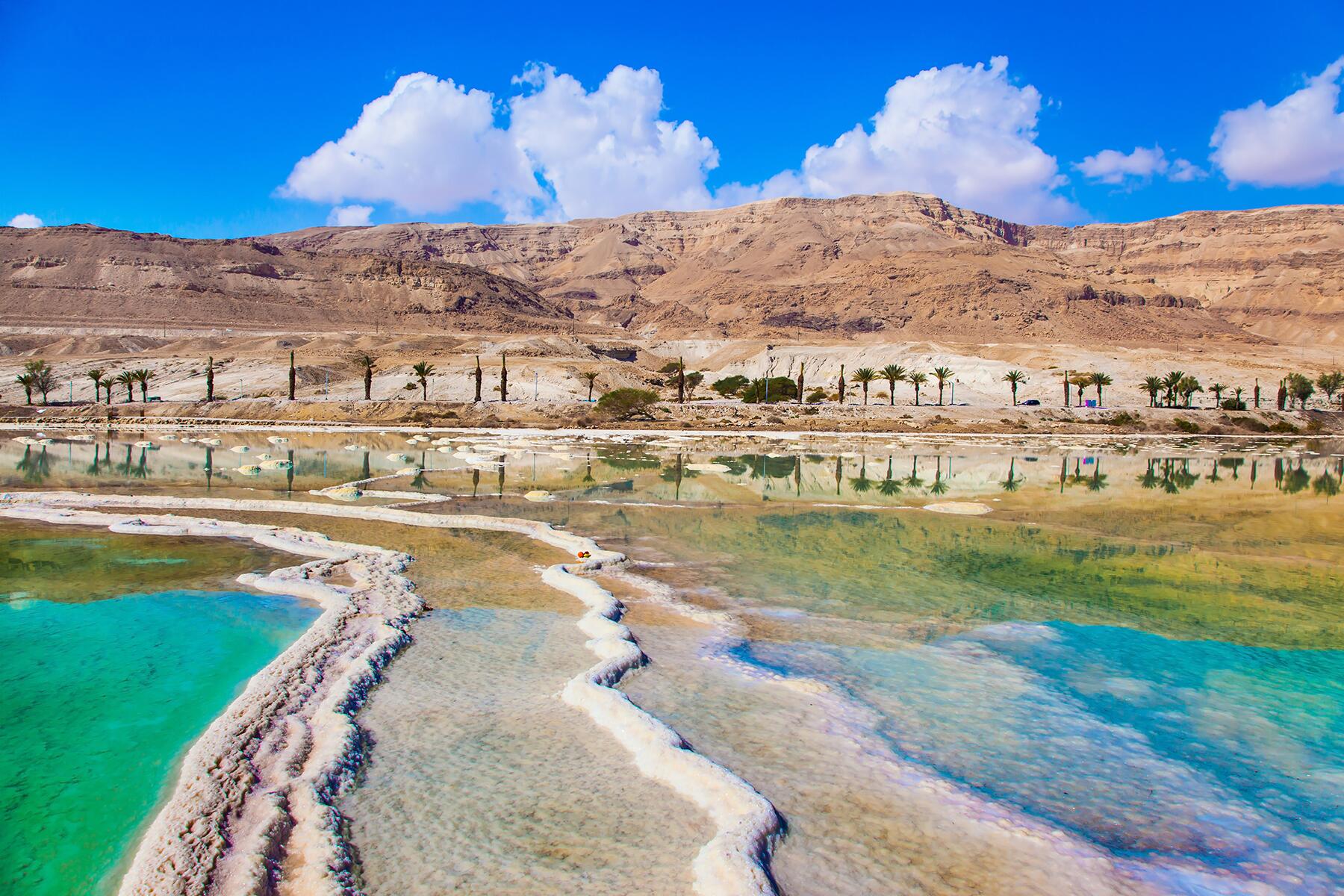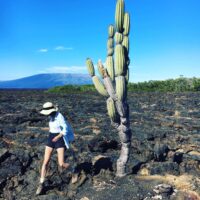These places are so extra.
If you’re usually doing the most, but now you’re stuck inside, let’s take a little trip—safely, from your screen—around the world and stop by some of the most extreme places on the planet. You don’t have to pack a thing or even bother putting on pants!
I can’t promise that knowing any of the little tidbits below will win you any friends. But you never know when this trivia might come in handy—maybe during a virtual happy hour tonight or your future Jeopardy audition?
At the very least, you’ll have your answer ready the next time someone asks, “If you were an extreme place on Earth, what would you be?” Are you the rugged, loner mountain? An ice-cold glacier? A steaming, hot geothermal site? Let’s find out.
Top Picks for You
The Coldest Place: Antarctica
The award for the absolute chilliest place on Earth goes to Antarctica. On a snowy plateau somewhere near the South Pole, Fahrenheit (62 degrees Celsius) scientists used satellites to measure temperatures. Not exactly the kind of weather that inspires you to bring your swimsuit, but you can warm up in the heated saltwater pool on the deck of MS Seaventure while you #IcebergsAndChill with Polar Latitudes. Or, if you’re feeling feisty, you can take a polar plunge as part of your Antarctica experience with the eco-conscious adventurers at Aurora Expeditions. Don’t worry; they won’t be taking you to Antarctica during the coldest part of the year and you certainly won’t be plunging into a pile of snow up on that South Pole plateau. But there’s a good chance you will have absolutely no chill when you see adorable penguins and other incredible wildlife that live in the coolest place on the planet.
The Hottest Place: Death Valley, California
Temperatures aren’t consistently recorded in many of the planet’s inhospitable, scorching hot spots so there’s some debate on where the hottest place is. Furnace Creek in Death Valley, California, holds the title for the hottest temperature recorded at 134 degrees Fahrenheit (57 degrees Celsius). Admire the badlands of Death Valley National Park from Zabriskie Point lookout, take in the panoramic views of Badwater Basin from Dante’s View, or join a ranger-led trek.
The Dallol region of northern Ethiopia is the hottest regularly-inhabited place on Earth, with an average temperature of 94 degrees Fahrenheit. Observe the fascinating geothermal activity and otherworldly landscapes found here with a reliable operator such as Kibran Tours or Wild Frontiers.
Recommended Fodor’s Video
The Driest (Nonpolar) Place: Atacama Desert, Chile
Normally, being left high and dry is not aspirational. But the Atacama Desert in Chile—the highest and driest nonpolar desert on Earth—is a magical place for exploring geothermal landscapes by day and the expansive, starry sky by night. Family-owned Tierra Atacama can arrange your desert adventures to include geysers, flamingoes, and full moon hikes.
The Wettest Place: Mawsynram, India
If you’re visiting Mawsynram, you’ll need your rain gear. This village receives nearly 500 inches of rainfall per year, making it the wettest place on the planet. When moist monsoon winds form the Bay of Bengal meet the mountains around Mawsynram, the rain comes pouring down—sometimes it’s so deafening, schools close and locals put grass on the roofs to muffle the sound.
The Tallest Mountain: Mauna Kea, Hawaii
Here’s a bit of mountain trivia to help you win game night: Mount Everest is not the tallest mountain on Earth. At 29,029 feet, the summit is indeed the highest point above global mean sea level. But if we’re talking about truly the tallest mountain—from base to peak—that title belongs to Mauna Kea, a sacred volcano in Hawai`i that measures more than 33,500 feet.
The Highest Free-Standing Mountain: Mount Kilimanjaro, Tanzania
So, basically, Mount Kilimanjaro is a very big loner. It’s the highest “free-standing” mountain—19,341 feet above sea level and not part of a mountain range. A stay at Campi ya Kanzi in Kenya gives you one of the best views of this solo stunner. Or, if you’re keen to experience a safari and climbing combo, Nomad Tanzania can arrange that extreme dream.
The Lowest Point On Dry Land: Dead Sea
How low can you go? You can reach about 1,350 feet below sea level without even dipping a toe in the water at the Dead Sea’s salt-encrusted shoreline, which is shared with Jordan, Palestine, and Israel. This is the lowest piece of dry land on the planet. Of course, while you’re here you should take a soak in the mineral-rich Dead Sea. But don’t expect to sink to new levels; the salt in this hypersaline lake creates buoyancy so you don’t have to ponder whether you’ll sink or swim as you float along in this big, briny bath.
The Northernmost Point On Land: Kaffeklubben Island
Although the name of this island, located near the North Pole off the coast of Greenland, translates to “Coffee Club,” you aren’t likely to catch coffee lovers congregating here. It’s the planet’s northernmost point on land which means that the conditions can be harsh and access is by qualified expedition only. Arctic poppies and purple saxifrage bloom in the summer despite lows in the 20s (degrees Fahrenheit), earning the saxifrage the title of the highest elevation plant in the world. This purple flower is one of the few living species on the planet that can say it’s on top of the world and actually mean it. Well, that is, if plants could talk.
The Southernmost Point on Land: South Pole
Antarctica is the driest, windiest, and coldest continent. It’s also home to the southernmost point on land. And, believe it or not, people actually live here—at the Amundsen-Scott South Pole Station—conducting research in areas that include biomedicine, astronomy, astrophysics, glaciology, and seismology. This is the only inhabited point on land where the sun is visible six months followed by six months of continuous darkness.
The Most Remote Island: Bouvet Island
Located between Antarctica and South Africa, yet claimed by Norway, the most remote island in the world is basically a big ol’ uninhabitable ice cube. Bouvet Island is surrounded by glaciers and covered in ice. It has a bizarre past that includes an alleged nuclear incident and an abandoned boat with unknown passengers that have never been found.
The Most Remote Settlement: Edinburgh of the Seven Seas
About 1,400 miles from uninhabited Bouvet Island, there are signs of human life on Tristan da Cunha. This island in the South Atlantic Ocean is home to less than 300 residents and the most remote settlement on Earth: Edinburgh of the Seven Seas. The nearest inhabited place is Saint Helena Island 1,350 miles away. Climb up to The Base on Tristan da Cunha and take a peek inside the crater of the volcano that destroyed beaches and a crawfish canning factory in 1961, but miraculously spared local homes and a crucial freshwater spring.
The Most Biodiverse Country (By Area): Colombia
If variety is the spice of life, Colombia is muy picante. About 10% of the world’s biodiversity exists here in its 340 ecosystems, making it second in biodiversity only to much larger (in area) Brazil. Colombia is an orchid-spotting and birdwatching paraiso—ranking number one in the world for bird and orchid species diversity and number two for amphibians, plants, butterflies and freshwater fish.
The Most Biodiverse Floral Region: Cape Floral Kingdom
Feel like royalty frolicking amidst the fairytale landscapes of South Africa’s Cape Floral Kingdom, the most biodiverse floral region, where you’ll find the highest known concentration of plant species in the world—70% of which grow only here. Plant yourself at the eco-luxury Grootbos Private Nature Reserve where you can take a guided botanical safari to learn about the more than 800 plant species on the property and enjoy a South African sundowner with views over the fynbos.
The Most Underground Town: Coober Pedy
On the surface, Coober Pedy appears abandoned. But if you take a deeper look, there’s an entire town underground in the outback of South Australia. And it’s the largest opal producer on the planet, with 70% of the world’s opals mined here. About 150 million years ago, Coober Pedy was covered by an ocean. When the waters receded, sandy silica minerals from the seabed flowed into cracks in the rocks, solidifying over time to create opal, a multi-colored gemstone. Residents here keep their cool by avoiding the intense desert heat—the majority still live underground today. And if you think this sounds like some apocalyptic existence, you aren’t the only one; Mad Max Beyond Thunderdome was filmed here, in the harsh yet dazzling desert-scapes. For an extraordinary experience, take the Ghan Train from Darwin and cross through the outback— safely viewing the extreme scenes from your comfortable railcar—and arrive at quirky Coober Pedy in style before continuing on to Adelaide.
The Sunniest City: Yuma, AZ
Yuma, Arizona averages 11 hours of sunlight per day and more than 4,000 sunlight hours per year, earning it the golden award for the consistently sunniest place on Earth. Skip along the Imperial Sand Dunes or get your dose of Vitamin D with a hike around Imperial National Wildlife Refuge or a birdwatching walk at East Wetlands Environmental Restoration Area.
The Darkest Town: Rjukan, Norway
High mountains and low placement of the sun make for some very dark days in Rjukan, a town located in a valley west of Oslo, Norway. For six months out of the year, Rjukan receives no direct sunlight courtesy of its placement in the shadow of the mountains. Or, at least, it didn’t receive direct sunlight until the town intervened in 2013, finally implementing a 100-year-old idea of using a mountainside manmade mirror system to redirect sunlight down into the town.
The Largest Coral Reef: Great Barrier Reef
Even if you go to the moon, you can’t escape the immensity of the Great Barrier Reef, located off the coast of Australia’s Tropical North Queensland. It is the largest structure on Earth—its length, which measures the entirety of the west coast of the U.S. (from the Canadian border to Mexico), allows it to be seen from the moon. As mass coral bleaching events have caused devastation to some of the reef, it’s important to choose your tour operator carefully. Look for operators that are eco-certified through Ecotourism Australia and also ask about Master Reef Guides—the professional reef storytellers that provide invaluable knowledge about the reef ecosystems and tips on how visitors can support conservation efforts.
The Largest Dinosaur Footprints: Kimberley Coast
You’ve heard of the Australian Outback, but how about Australia’s Jurassic Park? Indigenous people of the Dampier Peninsula and west Kimberley had cultural connections with dinosaur tracks, and more evidence of that—including the largest dinosaur footprints on the planet—has been found recently in Western Australia’s Kimberley Coast. You can discover 120 million-year-old footprints around Cable Beach, Gantheaume Point, and Reddel Beach at low tide, or join a dino tour with Broome Hovercraft Tours or Yawuru Aboriginal Bart Pigram for some incredible local insight, storytelling, and cultural context.
The Oldest Desert and Highest Dunes: Namib Desert
Ancient sands are piled high in the Namib Desert. It’s the oldest desert in the world and the rust-colored sand dunes are the highest on the planet. Watch the sunrise at Sossusvlei and go glamping at Camp Sossus near the UNESCO World Heritage Great Namib Sand Sea with locally-owned, conservation-conscious Ultimate Safaris.
The Longest Known Cave System: Mammoth Cave National Park
Just as the name implies, the cave system at Kentucky’s Mammoth Cave National Park is, well, mammoth. With over 400 miles of underground caverns, it’s the longest known cave system on Earth. Guided tours can take you for a walk down Gothic Avenue where natural rock formations resemble Gothic architecture.
The Largest Rainforest: Amazon
Covering 1.4 billion acres and stretching across a large part of northwestern Brazil as well as parts of Bolivia, Colombia, Ecuador, Guyana, Peru, Venezuela, Suriname, and French Guiana, the Amazon Rainforest is the largest rainforest in the world. One in 10 known species on Earth make their home here and, as a planet, we all depend on the Amazon. This massive rainforest helps suck carbon from the atmosphere and stabilize the climate. The loss of large swaths of this rainforest to fires and deforestation has a ripple effect on indigenous livelihoods and culture as well as local and global economy, foods, medicine, ecosystems, and climate. To truly appreciate this special place, sail further into the Brazilian Amazon on a multi-day, eco-focused Amazon Nature Tours expedition. Their Tucano Yacht has solar-powered electricity and water, supports local staff, and serves locally-sourced meals.
The Largest Shark Sanctuary: French Polynesia
More than 20 species of sharks—including tiger, gray reef, lemon, blacktip, whitetip, blackfin, and mako—cruise this shark preserve in French Polynesia that covers 1.5 million square miles of sea across The Islands of Tahiti. In the Tuamotu Archipelago where the island of Fakarava is also designated as a UNESCO Biosphere, you can witness sharks actively feeding in groups as large as 700. Sharks are not only ecologically important in French Polynesia, they are also culturally significant, often representing the souls of ancestors in local lore.





